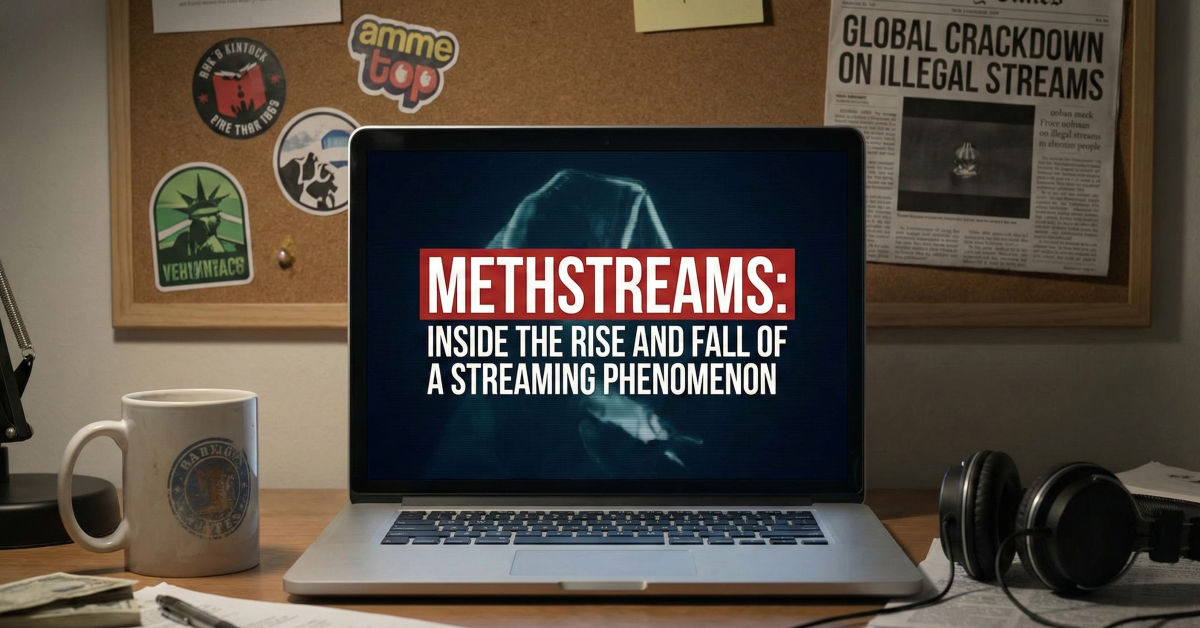For millions of sports fans around the world, StreamEast was not just a website—it was a lifeline. Within the first hundred words: It provided instant, free access to major sports leagues, from football and basketball to combat sports and motorsports, without subscriptions, geo-blocks, or login screens. Its appeal was immediate all the excitement of live games without the burden of expensive streaming bundles or region-restricted broadcasts. But behind its slick interface and dependable uptime lay a sprawling, unauthorized infrastructure built entirely on unlicensed content distribution. And by late 2025, after years of explosive growth, StreamEast collapsed under the weight of a coordinated global crackdown that dismantled its network, seized servers, and signaled a new chapter in the battle over sports media piracy.
StreamEast’s demise was not just a takedown—it was a cultural moment. It revealed the scale of global appetite for free live sports, highlighted the growing frustration with fragmented streaming rights, and forced broadcasters and fans alike to confront uncomfortable truths about digital access. In tracing the arc of StreamEast’s rise and fall, we can see a portrait of a global ecosystem caught between technological possibility and economic constraint, one that continues to shift long after the website’s final link went dark.
The Rise of StreamEast: A Pirate Empire Built on Convenience
StreamEast became famous not through flashy marketing or viral campaigns but through something far more powerful: word of mouth. Sports fans who stumbled upon it found a site that felt surprisingly clean for a pirate service. There were minimal pop-ups. Navigation was simple. Games were easy to find. Mirrors—backup links that kicked in when a stream failed—were neatly arranged beneath each match. Users who expected chaos, lag, or malware-laden overlays instead found a platform that looked nearly professional.
Why StreamEast mattered
The platform filled a widening gap between fan expectations and the realities of modern sports broadcasting. As streaming replaced traditional cable, the rights market splintered: one league might be split across three services, or a single sport could require multiple subscriptions. For international fans, access was even harder. Licensing agreements meant that a Premier League match available in one country might be entirely absent in another.
StreamEast sidestepped those barriers. It became the informal “global stadium,” offering universal access where legal providers could not or would not. Its audience included:
- Viewers priced out of premium subscriptions
- International fans without local broadcast access
- Casual observers who wanted one match, not a year-long contract
- Communities in regions with limited broadband infrastructure
The site’s minimalist architecture helped it flourish. Its operators curated links rather than hosting streams directly, reducing server load and enabling rapid pivots whenever domains were blocked. This agility made it difficult for authorities to pin down its operations. By the midpoint of the decade, dozens of mirror sites echoed StreamEast’s design, but only a subset connected to the true network.
The anatomy of a streaming juggernaut
StreamEast operated with a hybrid model: partly a portal, partly an aggregator. The home page listed matches with crisp icons and league labels. Clicking a match opened a gallery of sources, often embedded players pulled from third-party hosts. This structure allowed the platform to scale rapidly. If one host failed, another could be slotted in with minimal disruption.
This nimbleness was essential to its success. Many illegal platforms suffer from poor maintenance, overwhelming ads, or broken links. StreamEast, by contrast, gave the impression—however illusory—of reliability. Its operators maintained enough quality control to become the default choice in fan communities across social media, gaming forums, and private Discord channels.
The Legal and Security Shadows Behind the Stream
Despite its sleek veneer, StreamEast operated entirely outside the boundaries of legal broadcasting. Every stream it offered—whether a domestic league, an international tournament, or a pay-per-view event—was unauthorized. Yet the platform’s apparent legitimacy often blurred this reality for users.
The legal landscape
Sports broadcasting is one of the most tightly regulated sectors in global media. Rights are sold for enormous sums, often through exclusive deals. When a service like StreamEast bypasses those agreements, the result is straightforward: piracy. But legal consequences differ dramatically by jurisdiction.
For operators, the stakes are high. Running a large unauthorized streaming site can trigger civil lawsuits, criminal charges, asset seizures, or extradition. Operators often conceal their identities, using offshore hosting, rotating domain registrars, and layers of digital obfuscation to dodge responsibility.
For viewers, consequences are usually lighter but not nonexistent. While most fans face no direct enforcement, some regions have begun penalizing repeated access to illegal streams, especially when accompanied by downloads or redistribution. Users are rarely targeted—but the environment continues to evolve.
The hidden risks for fans
Beyond legal exposure, security threats form the darker core of most unauthorized streaming services. StreamEast stood out for its unusual cleanliness, but “clean” in design does not mean “safe” behind the scenes.
Most pirate streaming platforms rely on:
- Aggressive third-party ad networks
- Tracking scripts
- Redirects masquerading as play buttons
- Hidden frames loading promotional content or malware
StreamEast’s popularity made it an especially attractive target for malicious actors. Its operators may have kept the front end relatively tidy, but embedded players often carried their own advertising layers. One wrong click could expose a device to spyware or lead users into phishing traps.
The site’s vast reach meant millions willingly traded security for access—often without realizing the scale of the trade.
A Coordinated Crackdown: How StreamEast Fell
The downfall of StreamEast was not sudden it was the culmination of a long, deliberate pursuit. Rights holders across multiple continents had watched its traffic rise into the millions. Enforcement organizations, government agencies, and media conglomerates quietly gathered intelligence. The network’s mirrors, hosting partners, and financial pathways were mapped over months.
The operation
By early September 2025, a coordinated strike unfolded. Authorities dismantled core servers believed to anchor the StreamEast infrastructure. Domains long associated with the platform were shut down or redirected to legal-stream warning pages. Arrests reportedly followed, accompanied by the seizure of laptops, payment records, and communication equipment.
The strategy was clear: hit the backbone, not the branches. Pirate sites often survive superficial takedowns because mirrors proliferate. But by targeting the servers that curated streams, handled updates, and fed data to dozens of connected domains, enforcement agencies effectively snapped the network’s spine.
The immediate aftermath
Within hours, fans noticed. Live-match links that had worked the previous night simply died. Chat rooms filled with frustration and disbelief. Social media buzzed with speculation about whether the site would return under a new domain.
But this time, something was different. StreamEast’s disappearance felt decisive. Even as mirror sites popped up, none carried the familiar reliability or centralized coordination. The ecosystem had been scattered.
The shutdown became a case study in modern digital enforcement: targeted, cross-border, and designed to limit rapid reconstitution.
What the Shutdown Did—and Did Not—Accomplish
Below is an expanded view of its impact:
| Achievements | Limitations |
| Removal of the core StreamEast infrastructure | Emergence of smaller, harder-to-trace clones |
| Demonstrated international cooperation | Fans continued seeking illegal alternatives |
| Deprived millions of a major piracy hub | Legitimate services still widely fragmented and costly |
| Sent a strong deterrent message to operators | Enforcement remains reactive rather than preventative |
| Reduced centralized security threats | Risk increased as users wandered into less reliable sites |
StreamEast’s takedown reshaped the piracy landscape but did not eliminate it. Instead, it decentralized it. While some fans returned to legal providers, many drifted toward copycat platforms—often with weaker security and more aggressive advertising.
Broader Industry Implications
The story of StreamEast exposes a fundamental tension in global sports media: the growing gap between fan expectations and the business models that sustain professional sports.
Rights fragmentation and subscription fatigue
Fans today face a sprawling, expensive streaming map. A single season of one sport may require:
- A national broadcaster
- A league-specific app
- A regional streaming service
- An international pass for out-of-market games
StreamEast thrived because it simplified this insanity. Its shutdown does nothing to resolve the underlying fragmentation that pushed fans toward piracy in the first place.
The sustainability problem
Broadcast rights are the financial engine of modern sports. They fund teams, pay players, and keep leagues running. But when fans turn to pirate services, that engine sputters. Rights holders argue that piracy reduces revenue, ultimately hurting the quality and availability of sports content.
Yet fans counter that legitimate access has become too complicated and too expensive. The StreamEast phenomenon reveals a marketplace out of sync with its audience.
Enforcement vs. innovation
The crackdown represents a victory for enforcement, but long-term progress may depend on innovation. Fans are not simply seeking “free”—they are seeking:
- Simplicity
- Affordability
- Consistent access
- Cross-regional availability
- Reasonable subscription options
Unless legal services offer these, demand for illicit platforms will remain robust.
Consumer Lessons After the Collapse
The fall of StreamEast leaves fans with several takeaways:
- Free streaming is never truly free. Hidden trackers, malware, and intrusive ads often lurk beneath.
- Unauthorized platforms can disappear overnight. The shutdown left millions scrambling.
- Mirrors are not equivalent to the original. Many are hastily assembled, unstable, or dangerous.
- Legal access remains the safest path. Even if fragmented, it avoids security and legal risk.
- Users should treat anonymous streaming links with skepticism. Reliability and safety vary widely.
Takeaways
- StreamEast accumulated a massive global audience by offering clean, free access to live sports without barriers.
- Its rise reflected frustration with expensive, fragmented legal sports streaming.
- Though polished on the surface, the platform functioned entirely on unlicensed and insecure streams.
- A major coordinated crackdown dismantled the network in 2025, seizing domains and disabling servers.
- The shutdown disrupted piracy but did not eliminate it; users migrated to less reliable alternatives.
- The case highlights flaws in the sports broadcasting market—especially cost and fragmentation.
- Long-term solutions require both enforcement and consumer-friendly legal options.
Conclusion
The story of StreamEast is emblematic of a digital era defined by access, expectation, and conflict. It rose because fans wanted simplicity and affordability. It fell because it threatened a multi-billion-dollar global system built on exclusive rights and strict control. And now, its absence forces both fans and the industry to confront the fractures that made such a platform inevitable.
The shutdown is not merely the end of a site. It is a reflection of an ecosystem in transition, an unresolved battle between the desire for universal access and the realities of high-cost rights markets. New platforms will emerge; enforcement will continue; fans will seek ways to watch the sports they love.
What StreamEast ultimately leaves behind is a challenge: to create a world where access to sports does not require navigating a maze of subscriptions, nor pushing fans toward the risks of piracy. Its fall marks the closing of a chapter—but far from the end of the story.
FAQs
Is it legal to use StreamEast?
No. StreamEast was an unauthorized streaming platform that distributed copyright-protected sports content without proper licensing. Accessing such streams violates copyright laws in many jurisdictions, exposing operators and possibly users to legal consequences.
What happened to StreamEast in 2025?
In September 2025, authorities — led by the anti-piracy coalition ACE along with Egyptian law enforcement — shut down roughly 80 StreamEast domains, arrested individuals associated with it, and seized servers and financial assets.
Could fans be prosecuted for just watching?
While prosecutions tend to target distributors rather than viewers, users may still face civil liability. In some jurisdictions, downloading or redistributing pirated streams carries criminal penalties.
Are “mirror” or “copycat” StreamEast sites safe to use?
No. Many so-called mirror sites simply embed streams from other unauthorized sources — often with intrusive ads, malware risks, or dubious redirects. Experts warn such sites pose high security and privacy risks.
What should sports fans do now to watch live games legally and safely?
Fans should use legitimate, licensed streaming services or broadcasters that have acquired official rights. While these may require subscription fees, they ensure legality, security, and stability — and support the teams and leagues they love.











